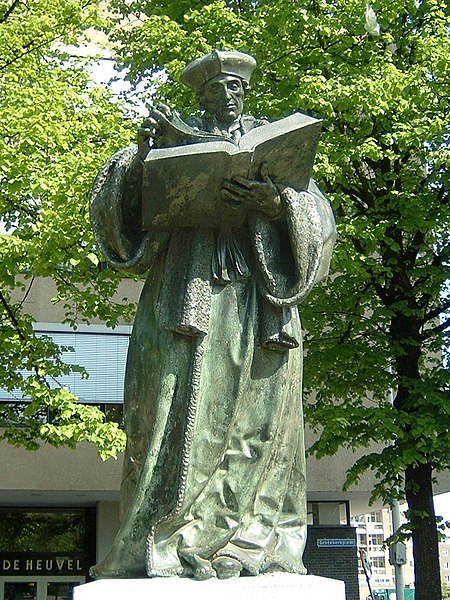Novum Instrumentum Omne, later called Novum Testamentum Omne, was a bilingual Latin-Greek New Testament with substantial scholarly annotations, and the first printed New Testament of the Greek to be published. It was prepared by Desiderius Erasmus (1466–1536) and printed by Johann Froben (1460–1527) of Basel.
Erasmus
Leaf of Complutensian Polyglot Bible showing the start of Exodus, recto page. Upper part: Greek LXX with Latin interlinear; Latin Vulgate; Hebrew; Hebrew roots in margin. Lower part: Aramaic; Latin translation of Aramaic; Aramaic roots in margin.
First page of Preface, Annotations of the New Testament (1521), with characteristic Froben decoration
Acknowledgement page engraved and published by Johannes Froben, 1516
Desiderius Erasmus Roterodamus was a Dutch Christian humanist, Catholic theologian, educationalist, satirist, and philosopher. Through his vast number of translations, books, essays, prayers and letters, he is considered one of the most influential thinkers of the Northern Renaissance and one of the major figures of Dutch and Western culture.
Portrait of Erasmus of Rotterdam (1523) by Hans Holbein the Younger resting his hands on a Greek The Labours of Hercules, "arguably…the most important portrait in England"
Statue of Erasmus in Rotterdam. Gilded bronze statue by Hendrick de Keyser (1622), replacing a stone (1557), and a wooden (1549).
Hieronymous Bosch, Temptation of St Anthony, triptych (c. 1501), painted in 's-Hertogenbosch, later owned by friend Damião de Gois
Bust by Hildo Krop (1950) in Gouda, where Erasmus spent his youth








